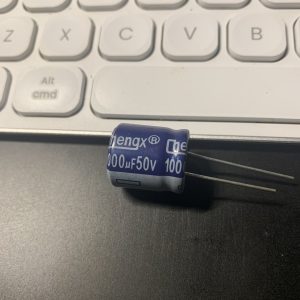在斯科特撰写的《数学史》一书中,P148页有一段简单的描述:沃里斯曾仿照卡佛来利的方法解决了纵坐标由\((1-x^2)^n , n \in \mathbb{Z}\)的求积问题。
书上给出了如下若干积分及计算结果:
1、\(\int_0^1 (1-x^2)^0 dx = 1\)
2、\(\int_0^1 (1-x^2)^1 dx = \frac{2}{3}\)
3、\(\int_0^1 (1-x^2)^2 dx = \frac{8}{15}\)
4、\(\int_0^1 (1-x^2)^3 dx = \frac{48}{105}\)
上面这4道题看起来还都是比较容易的,即便是第4题,只是计算量略微繁琐,但只要通过分部积分的方法,依然可以轻松得到答案。下面仅以第3题为例动笔跟着练习一下:
题目:计算 \(\int_0^1 (1-x^2)^2 dx\)
首先将多项式展开,然后利用分部积分法,对每一个简单积分进行求解,最终求和:
\(\int_0^1 (1-x^2)^2 dx \\ = \int_0^1 (1-2x^2 + x^4) dx \\ = \int_0^1 1 dx – 2 \int_0^1 x^2 dx + \int_0^1 x^4 dx \\ = x|_0^1 – 2 \times (\frac{1}{3} x^3) |_0^1 + (\frac{1}{5} x^5) |_0^1 \\ = (1-0) – 2 \times (\frac{1}{3}-\frac{0}{3}) + (\frac{1}{5} – \frac{0}{5}) \\ = 1-\frac{2}{3}+\frac{1}{5} \\ = \frac{8}{15}\)之所以使用第3题练笔,原因是后面的第4题如果如上方法推导的话,展开项更多,繁琐、浪费笔墨、且容易出错。但假设问题更复杂一点,例如想计算\(\int_0^1 (1-x^2)^{62} dx\),恐怕就不再是“有一点繁琐”,而是会非常繁琐、几乎无法完成的事情了。
所以上面一系列相似的问题,还是应该再找一找更为通用、便捷的工具进行计算。自然而然的想到了利用换元法进行计算。以上面第4题为例尝试一下改用换元法完成计算吧:
考虑到积分范围是从0到1,计算式中又明显能够感受到毕达哥拉斯的味道,因而尝试对\(x\)进行换元:\(x = sin \theta\)。
换元准备1:重新调整积分上下限:\(\int_0^1 dx = \int_0^1 d sin \theta \Rightarrow \int_0^\frac{\pi}{2} d \theta\)
换元准备2:计算式换元:\((1-x^2)^{3} = (1-(sin \theta)^2)^{3} = ((cos \theta)^2)^{3} = (cos \theta)^{6}\)
换元准备3:微分项还原:\(\frac{dx}{d \theta} = \frac{1}{d \theta} (sin \theta) = cos \theta \Rightarrow dx = cos \theta d \theta\)
通过以上准备,最终完成换元:\(\int_0^1 (1-x^2)^{3} dx = \int_0^\frac{\pi}{2} (cos \theta)^{6} cos \theta d \theta = \int_0^\frac{\pi}{2} (cos \theta)^{7} d \theta\)
至此问题得到了简化,能够看出最终的换元结果成为了B函数形态,将B函数原形写出来,目的是计算出B函数参数式:
\(B(x,y) = \int_0^1 t^{x-1}(1-t)^{y-1}dt = 2\int_0^\frac{\pi}{2} (sin \theta)^{2x-1} (cos \theta)^{2y-1} d \theta\)即通过:\(2\int_0^\frac{\pi}{2} (sin \theta)^{0} (cos \theta)^{7} d \theta\),
可得到:\(x=\frac{1}{2}, y=\frac{8}{2}\)
指明参数的B函数是:\(\int_0^\frac{\pi}{2} (cos \theta)^{7} \theta = \frac{1}{2}B(\frac{1}{2}, \frac{8}{2}) = \int_0^1 t^{-\frac{1}{2}} (1-t)^{3} dt\)
使用\(B-\Gamma\)转换:\(B(x,y) = \frac{\Gamma(x) \Gamma(y)}{\Gamma(x+y)}\)
最终得到Gamma函数:\(B(\frac{1}{2},4) = \frac{\Gamma(\frac{1}{2}) \Gamma(4)}{\Gamma(\frac{9}{2})}\)
其中\(\Gamma(\frac{1}{2}) = \sqrt{\pi}\),\(\Gamma(4) = (4-1)! = 6\),\(\Gamma(\frac{9}{2}) = \frac{(7!!)}{2^4} \sqrt{\pi}\)
将以上三项计算结果带回Gamma计算式,得到最终结果\(= \frac{48}{7!!} = \frac{48}{105}\)
附:沃里斯简介
约翰·沃里斯(John Wallis,1616-1703)是17世纪英国著名的数学家、逻辑学家,也是剑桥大学三一学院的毕业生,后来成为牛津大学的萨维尔几何学教授。沃里斯在数学、物理学、密码学等多个领域做出了重要贡献,对微积分的早期发展也产生了深远影响。

